Jerseys doing well in New Zealand
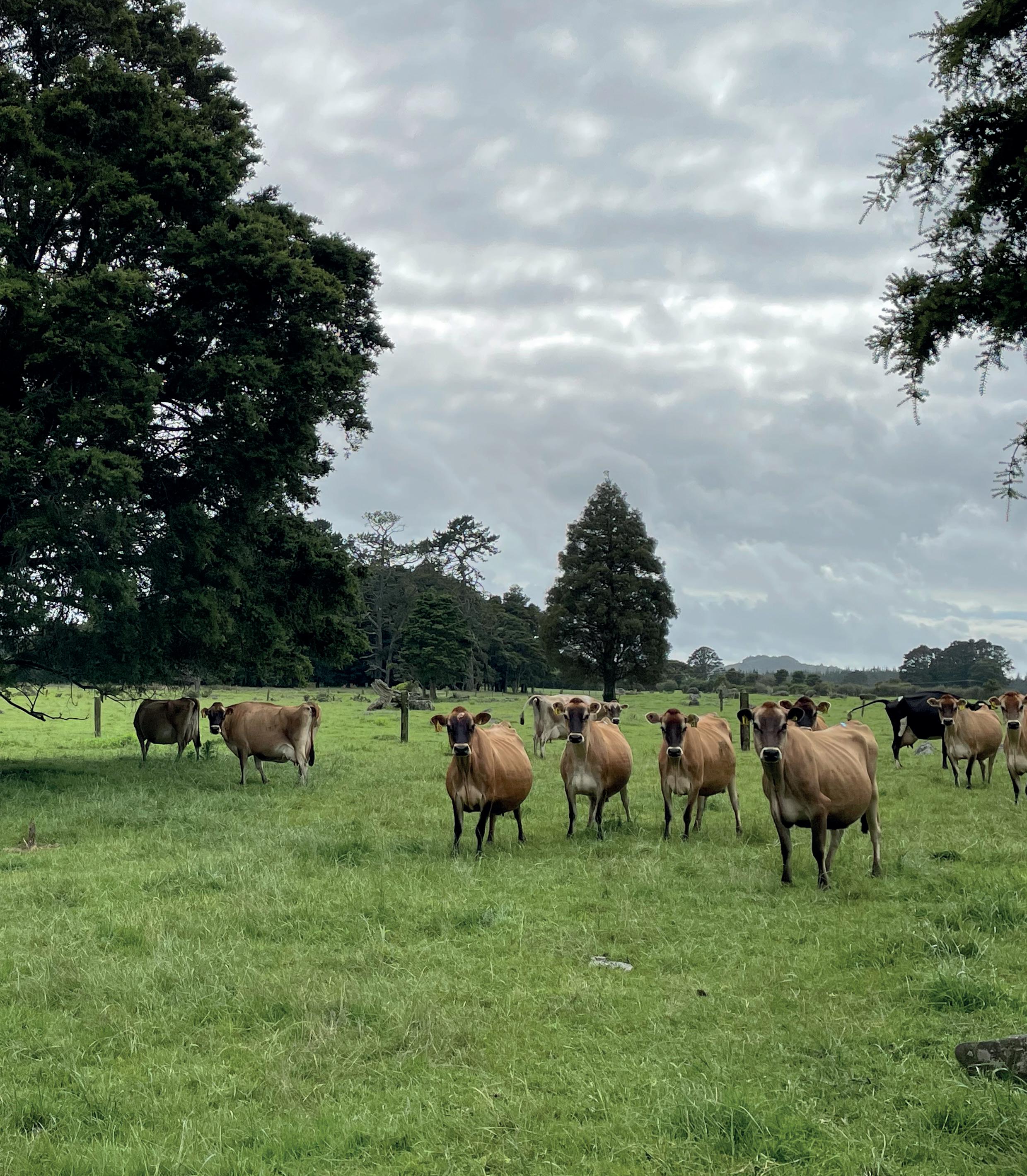
Pages 2-3
New year - New bulls
Page 5
Sexed semen improving dairy herd in Co.Meath

Pages 6-7
A day in the life of Eoin Kennedy
Pages 8-9
NZ trips for the team
Pages 4,10 and 11
Working to secure your future Issue 11 2023


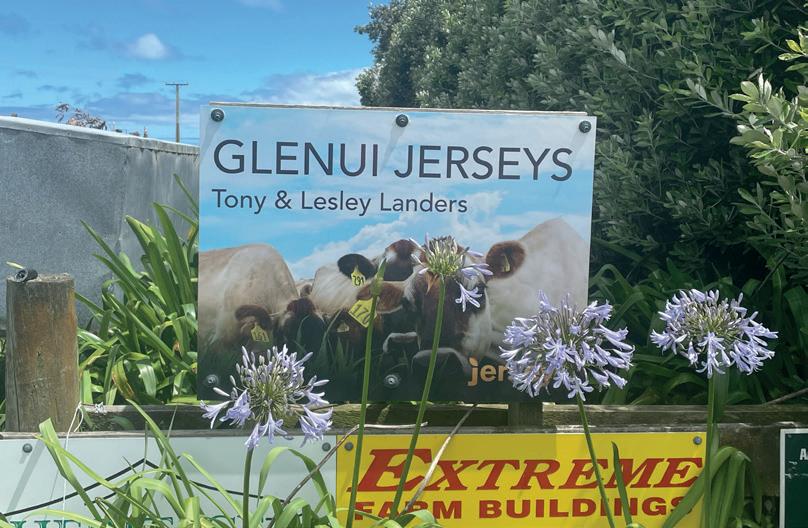


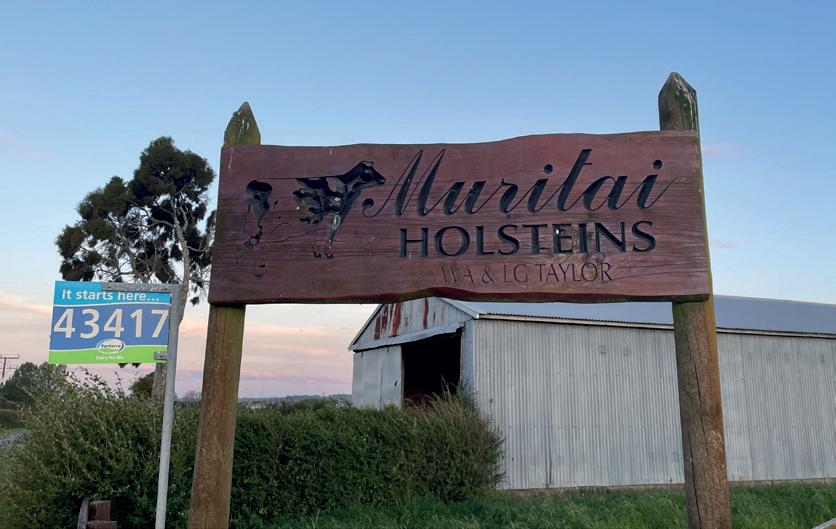
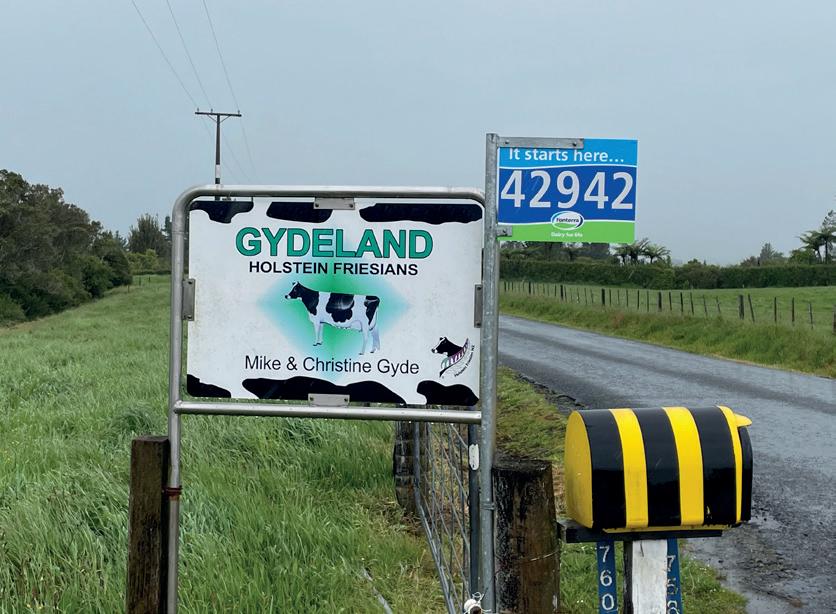
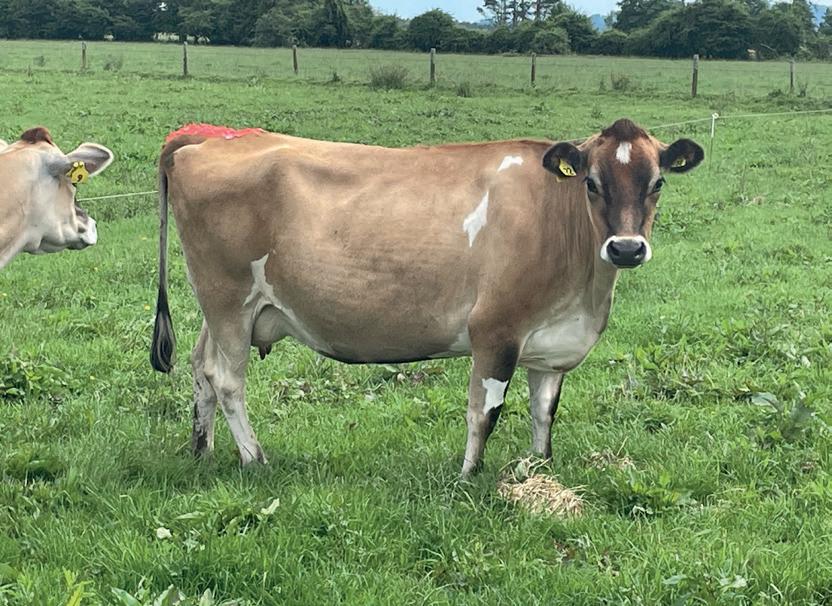
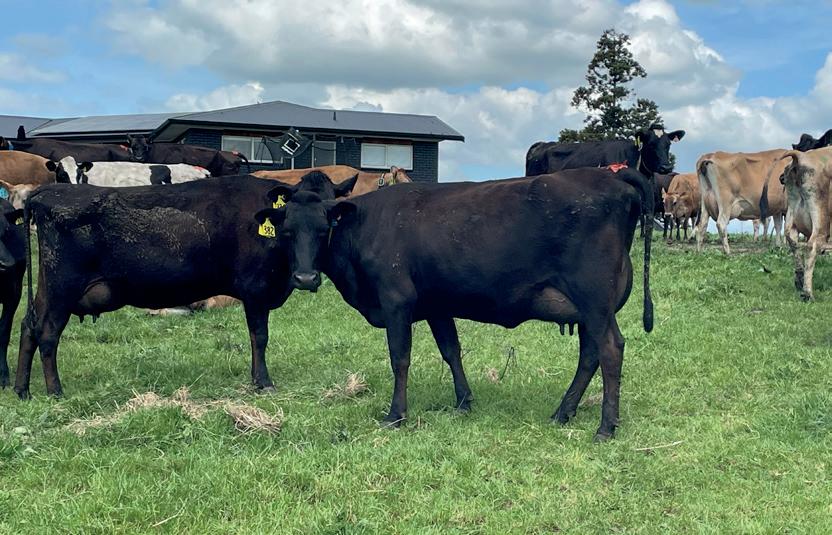
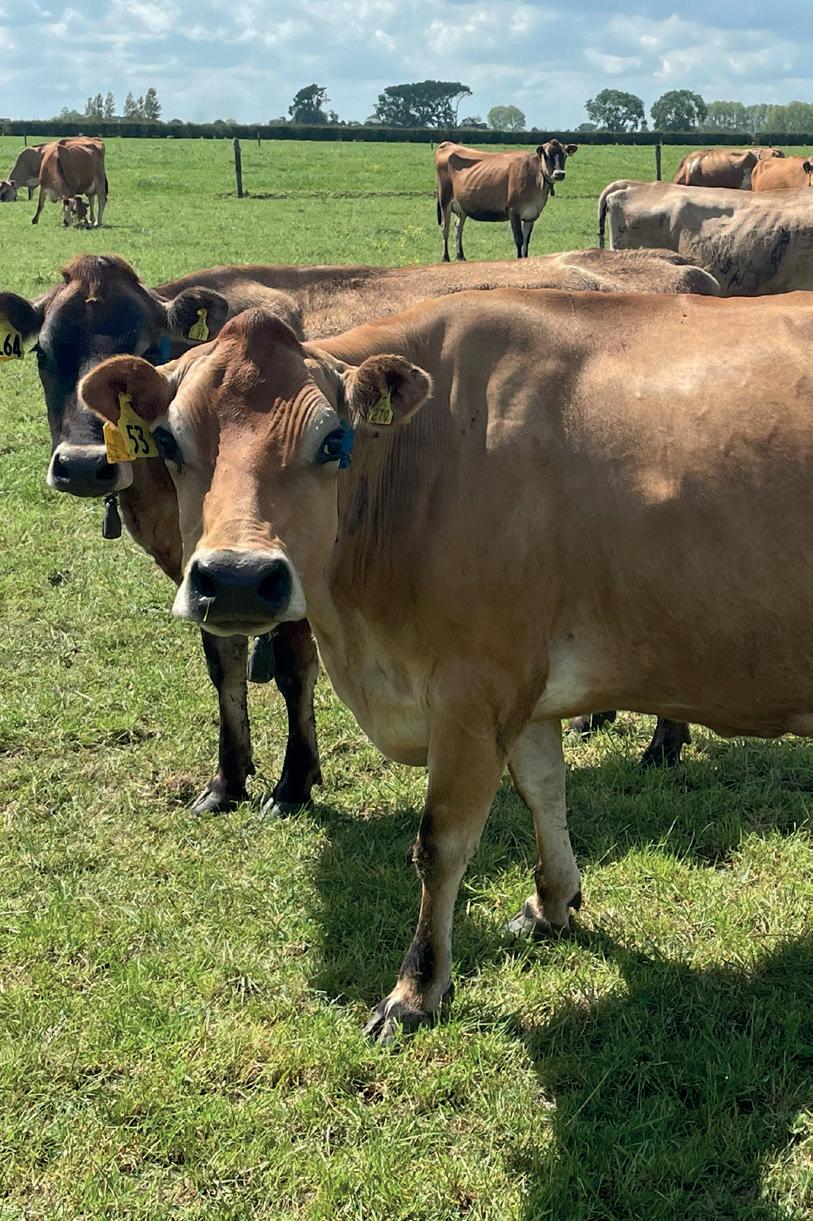

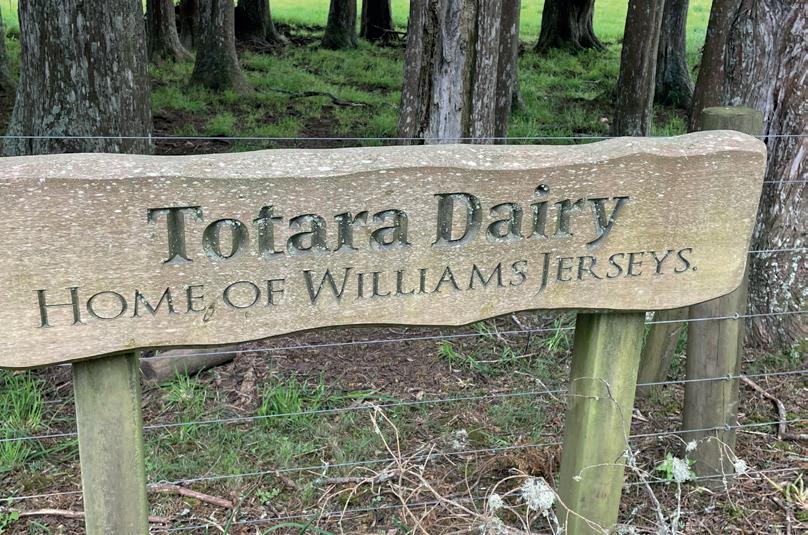
2 | LIC GRASSROOTS
“The Jersey breed in my opinion has never been in such a strong position in New Zealand as it is now.”
David Power talks about his time in New Zealand
As I sit here now, on a cold January evening writing this, it brings back memories of the warmer time I spent in New Zealand over the last 3 months. During this time, working closely with the sire selection team during their busy bull buying period, I was privileged enough to be involved in visiting and inspecting some of the top herds and cows in New Zealand.
I began my first week with the Commercial team, going through the background and logistics of LIC’s European stud based in Awahuri and the rostering of bulls we select for the European market. This also involved a visit to Awahuri in the Manawatu, five hours south of head office, to spend some time going through the strict EU regulations, meeting the farm staff and watching the whole process all the way through to straw production.
After this I joined the sire selection team for an 8-week period. Firstly I spent time out on farm viewing contract mating first calvers for TOP inspections, namely visiting the Tironui herd, breeders of Superman & Montage and the Maharee herd, breeder of Maharee AZ Orsim.

After this week, we received our genomic bull file containing the 1600 bull calves we would thoroughly sieve through for the next two weeks, before finally whittling it down to our final 235 bull calves. Made up of 100 Holstein Friesian, 45 Jersey and 90 KiwiCross® bulls.
After this I hit the road with the team for dam and bull calf inspections, ensuring all bull calves made the grade from a physical perspective and learning how to TOP inspect bull dams. During this time, I would have travelled the length and breadth of both islands. This included
visiting the Williams Jersey herd in Northland, down to the Glenui Jersey herd in Taranaki, the Arkans stud in Otorohanga and the Julian herd outside Taupo.
The following week Adrian Young and I headed down south for the week, where we travelled over 1300 km from Oamaru all the way north to Nelson, in order to carry out all our bull and dam inspections. Again, visiting numerous renowned herds such as Lynbrook Jerseys, Hawthorn Grove Jerseys, Tronocco Friesian stud & the Baldrick herd. Having all bred bulls that are available in Ireland such as Kartell, Shakir & Touchdown.
So after all this travelling, what were my takeaways from my time in NZ?
The Jersey breed in my opinion has never been in such a strong position in New Zealand as it is now. The majority of cows had excellent capacity as well as strong udder ligaments and production to match. A large number of the 18 code bulls proved very well last year and entered the Premier SiresTM team, while three more proven 19 code bulls were added to the team this year on top of the excellent genomic sires coming through the pipeline. It is a real testament to the work the Jersey breeders have done over the last 6 to 7 years.
With potential cow numbers dropping in both Ireland and New Zealand, there is a general acceptance that more will be asked of the cow in order to maintain production. And none more so than the Holstein Friesian. During my time there it was evident in the work being done within the Friesian breed that the focus is to achieve production capacity goals while also maintaining fertility. Alongside this the cow has to have the udder and ligament strength to maintain this production over her lifetime.
The KiwiCross® bulls as a team seem to be going from strength-to-strength, year on year. With the rise of Premonition in 2022 and now the rise of Flash-Gordon in 2023, who knows where 2024 will take us. In all aspects these bulls keep breaking the mould, from Premonition hitting the Jersey-like 6% fat to Flash-Gordon pushing production over 100kg milksolids. With a few excellent genomic bulls coming through such as Hackers Advantage and Julian Tu-Meke, it’s assuring to see the KiwiCross® sector is in an extremely strong place going forward.
On a final note, my time in New Zealand also gave me confidence in the Single Step Animal Model (SSAM) in correctly selecting the bulls for the next generation. An example of bulls that had high gBW as both genomic and now proven include both Premonition and Equator to name two, with many more hitting similar levels.
From this you will see some genomic bulls mixed in with our daughter proven bulls in our catalogues going forward. These bulls will be selected based on their gBW but with massive emphasis placed on their background pedigree.
ISSUE 11 WINTER 2023 | 3
I was lucky enough to get to travel to New Zealand with LIC. With my colleagues, I spent time at LIC headquarters based in Newstead to meet some of the team, local breeders and farmers. We also visited Awahuri, the station where all the bulls are jumped for Ireland and Europe. Seeing the premises first hand was very insightful and has given us a greater appreciation of all the work that goes on behind the scenes to make sure we get the best of the bulls from NZ into Ireland. Often in the same season that the bulls are being used in New Zealand, despite the quarantine and testing requirements for Europe.
I’d previously worked and studied in New Zealand for four years, so it was great getting a chance to return.
Much like Ireland, New Zealand is facing new environmental regulations and requirements. These are aimed at reducing emissions from agriculture as well as tackling nutrient run-off. New Zealand had already reached peak cow numbers, yet numbers have been falling over the last few years. However, milk production per cow has been increasing. New Zealand has seen record high milk pay-outs, and again, much like Ireland, has been facing increased costs. One of the impressive things about New Zealand is its scale, but also the work that goes into herd improvement.
Of New Zealand’s 4.9 million cows, over three-quarters of them are milk recorded, with 71% mated to AI1. In the past year, LIC inseminated 200,000 cows with fresh sexed semen alone. And, at peak times, 135,000 doses of fresh semen gets dispatched daily from Newstead.
There’s so much work that goes into breeding in New Zealand. At Newstead the genetics team evaluates 20,000 dams each year, for each breed, for either contract mating or embryo transfer (ET) work. LIC undertakes about 5,000 contract mating’s and does ET work on 200 heifers annually with many of their breeders doing their own ET work on their top dams.
The dams are physically inspected, and genetically evaluated before any contract mating’s are done or any bull calves are purchased. Nearly 2,000 bull calves are evaluated each year, but only 220 are purchased and go into the sire proving scheme.
There are about 190 sire proving scheme (SPS) farms in NZ. This scheme is a four-year program where genomically selected bulls
Shareholder and contract milking schemes work well in New Zealand
Aiden Cunningham reports on his trip to New Zealand
are used on these SPS farms, to generate daughter proofs. The daughters are milk recorded and evaluated for “Traits other than Production” (TOP). Of the 200 bulls that enter the SPS, only 20 graduates move into the Forward Pack team.
Some 60% of all the semen sold in NZ is from the Forward Pack. This works well to maximise genetic gain across the country. Most of the top breeders we visited were using a mix of Forward Pack and nominated sires.
In New Zealand, 85% of the cow’s diet is grazed grass and 14% of the cow’s diet is supplemented in the form for maize silage, bought in silage, crops and meal. Cows on average produce 400kg MS from a 268-day lactation and farms produce around 1200kg MS per hectare. Of New Zealand’s 4.9 million cows, 50% are crossbred, 32.5% are Holstein Friesian and 8.2% are Jersey1
Everything is based off grass growth, while maize silage or grazing crops may help extend lactations or fill deficits, particularly in drought prone areas. But for the most part, grass is king, and both management and milk production is dictated by pasture growth and pasture supply.
One of the most striking differences between Ireland and New Zealand, are the number of dairy farms that operate under a sharemilking or contractor milking arrangement.
Nearly 45% of herds have either a contract milker or a 50/50 sharemilker. In comparison, Ireland only has 3,500 registered farm partnerships and, while most of these are dairy farm partnerships, the vast majority of these are between members of the same family.
Less than 20% of farmed land In Ireland is rented (these numbers include dry stock and tillage farms).
A contract milker is a self-employed farmer that comes onto the farm supplying management, labour, quads, jeeps, fuel,
electricity, and dairy shed expenses in return for a percentage of the milk cheque. A 50/50 sharemilker does the same, but also brings with them all the cows and tractors and pays all animal and animal health related costs while splitting the nitrogen and feed bills with the landowner. This system allows for much better career progression and better work life balance for the landowner. Travelling around the country and spending time with different breeders, it was notable that focus was being put on several traits. The key ones were efficiency, capacity and udders.
Due to the changes to environmental regulations, and the fact that New Zealand had reached peak cow numbers, the focus is now on breeding a cow that’s efficient on a kg MS per kg LWT basis as well as a kg MS per kg DM eaten.


Where stocking rates need to be reduced, particularly in areas such as Canterbury and Southland, farmers and breeders in these regions are focusing on capacity. They want an animal that can eat as much of the homegrown feed as possible, producing as much milk as possible from this feed.
And, with this increase in production, farmers are looking to make sure they’re also improving udders so their cows will be able to handle the increase in kg MS. The udder overall score from the TOP traits has now been included into Breeding Worth. We were lucky enough to see some brilliant herds and breeders, such as Brendan Whyte, who purchased the Okura herd, the herd that OKT was bred from. Also Murray Gibb’s herd, breeders of Tironui Superman. All the breeders we met had such an intimate knowledge of their cows and their pedigree and were fanatical about breeding. This was motivating and great to see, and it was certainly a very worthwhile trip.
1 New Zealand Dairy Statistics
4 | LIC GRASSROOTS
New year, new bulls
With the new LIC Ireland catalogue heading out to letterboxes and inboxes around the country, here is a closer look at some exciting bulls available to Irish farmers this season.
Holstein-Friesian
By Michele van der Aa, LIC sire analyst
I could be biased, but this must be one of the strongest line ups of Friesian graduates in quite some time! If choice is what you’re after, we have it in abundance! No longer needing to choose one trait over another, for example fertility or udders, this line up of graduates offers the complete package..
119014 Buelin BM Equator:
If production, fertility & udders is what you’re looking for, then Equator is the bull for you. Bred by Stefan Buehler in Taranaki, Equator’s dam is an outstanding Mint-Edition cow with a PW of 754 over 6 lactations averaging 5.65% fat & 4% protein. Equator offers a massive, combined solids of 108kg with a fertility of 5.1%. On top of this, Equator is sired by Bothwell WT Maxima who was never available in Ireland, so Equator should offer an outcross option for many.
119012 Fanana BM Excellent:
With an udder overall BV of 1.26, the name Excellent really is fitting for this bull. With a gBW of $294 on top of his excellent udder BV, it’s hard to ignore this easy calving Friesian. This Maxima son also has strong solids in his pedigree with his dam averaging 5.58% fat & 3.7% protein across 5 lactations.
Jersey
by Danie Swart, LIC bull acquisition manager
From a breeding perspective, nothing provides more of a buzz than seeing a top line of great new heifers with good udders and conformation walking to the shed. Last year, LIC saw a tremendous team of 2018 Sire Proving Scheme graduates, and although it’s early days, there are great signs this season of some exciting 2019 graduates out of good cow families. It’s my privilege to profile three proven 19-code bulls, together with on of the top-ranked Jersey bulls:
319035 Careys CM Lexicon S2J:
Lexicon’s dam was farmed by Okura, but owned by Gavin and Kathryne Carey. Sired by Monopoly, his dam is out of the LIC Hall Of Fame bull Integrity. By adding a good number of herd test daughters, Lexicon has had a significant improvement in BW, mainly increasing his Protein and Fat gBVs. With a well-balanced TOP profile, he is surely a great allrounder with big production, and good stature, capacity, and udder overall BVs. His maternal line exhibits high production with PWs consistently greater than 400.
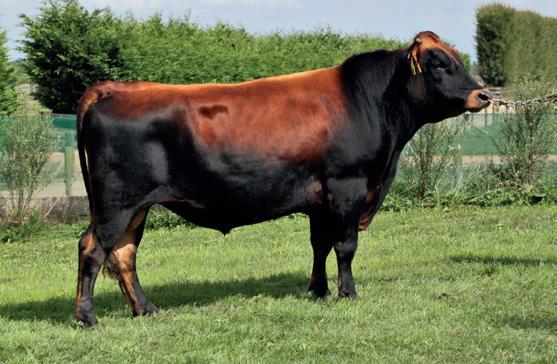

319037 Okura Tironui BT Marco ET:
Lyna Beehre from the Okura stud was spot-on in selecting Triplestar as the ET sire when she flushed the well-proven, high profile cow Tironui Integ Meg, owned by the Tironui stud of Murray and Janet Gibb. Meg is also the dam of Montage, and she is currently one of the most prominent cows in the Jersey breed. Big production and good liveweight are standouts for Marco. Production in this pedigree is phenomenal, with PWs exceeding 600.
319066 Tironui GB Montage ET:
The legacy of Tironui Integ Meg continues with another of her sons from the Tironui stud, Montage, sired by the great bull Glanton SS Bastille. Montage’s pedigree is a combination of two of the very best cow families in the industry, from Tironui and Glanton. He’s also a good allrounder, with high production, and excellent liveweight, capacity, dairy conformation and udder overall gBVs.
318021 Glanton Desi Banff:
One of the highest-ranking proven Jersey sires at LIC, Banff is well-liked by farmers. Out of the well-proven B family from the Glanton Stud of Rob and Alison Thwaites, Banff added 1,666 herd tested daughters in October & November (for a total of 2042). Many farmers comment that Banff daughters are the standout production two year-old daughters in their herds; this comes as no surprise with his combined protein and fat gBV of 69kgs.
KiwiCross
by Adrian Young, LIC senior sire analyst
In the KiwiCross® space, we’ve seen some great performances in the daughters of our bulls. Of the top 50 crossbred bulls available on the New Zealand RAS list, 48 have come from the LIC stable. Outlined below are a selection of outstanding graduates.
518038 Werders Premonition:
Bred by Thomas & Courtney Werder of Patea, this bull was profiled in last year’s catalogue, and it appears he’s improved on his potential after adding over 2,500 daughters to his proof. This Sierra son is now sitting at $494 gBW with a combined 93kg solids at 6% fat & 4.3% protein. Add in his udder overall of 0.64, it’s hard to ignore this bull in any bull team.

519073 Rhantana Olympic:
Bred from the Rhantana stud outside Paeroa, Olympic really brings conformation traits to the fore. With a capacity of 1.01 & an udder overall BV of 0.53, he really ranks in the top end of dairy conformation. With a combined solids of 74kg at 5.7% fat & 4.3% protein, this easy calving, outcross bull should be in every bull team.

519069 Van Straalens Defender:
With Defender we add another outcross to the bull team for the coming year. A Marshalls Silver Lining son bred from an outstanding Speed Dial dam with a massive PW of 840. Defender clearly brings his dam’s production to the table with a massive 101kg of solids, a fertility BV of 3.0 & an udder overall of 0.7.
Some of the best cow families are behind these bulls, and many genomic young sires of these cows are currently being used in contract mating and LIC’s embryo transfer programme. The legacy of these great cows will continue, we await with excitement the proofs of their future sons over the next few years. These bulls graduating emphasise the importance of generations of great cow families.
Co.Meath dairy farmer using LIC sexed semen to improve his herd
In a bid to improve the profitability, efficiency and fertility of his dairy herd, Padraic Harnan is using more LIC sexed semen than ever this spring, choosing top trait bulls that match up with his breeding animals.
We started using sexed in 2021, buying 60 straws as a bit of a trial,” he explains. “We were cautious to begin with, as we didn’t want to affect our six-week calving rate. But last year showed we could get good results from travelling this route, so we’ve bought 100 this year and will monitor it carefully to see how we do.”
As with many dairy farmers in Ireland, Padraic was getting very concerned about the bull calf issue and could see consumer pressure building and calf welfare coming more to the fore.
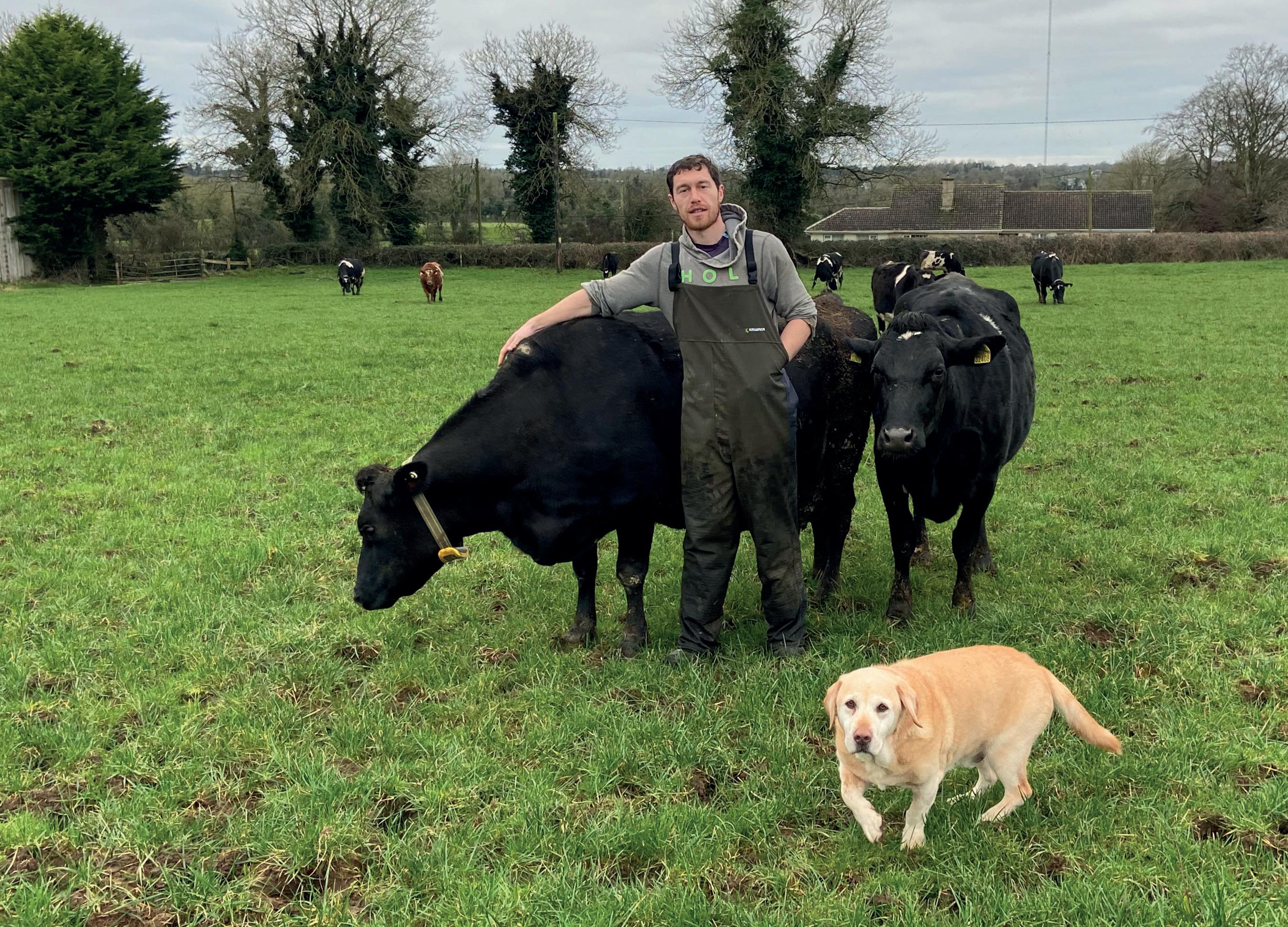
“Before our switch to sexed semen we were getting about 40 bull calves a year. Last year we had two from the 60 sexed straws. They really had no value at all. We’re small enough to put them out to local ‘hobby’ farmers who just want a few to rear, but they weren’t adding to the farm returns.
“And, inevitably, it was always our best cows that were having bull calves just when we wanted them to have heifers as future replacements!”
Padraic farms with his uncle, Liam, at
Kilmore, Kilcock, Co.Meath and has a herd of 137 NZ crossbred milkers that he’s been improving since 2014. This was a predominantly Holstein herd until then, but in late 2013 he bought and started milking the new herd. He had sold his entire herd and with the help of an LIC breeding advisor, bought in the crossbreds from three different herds.
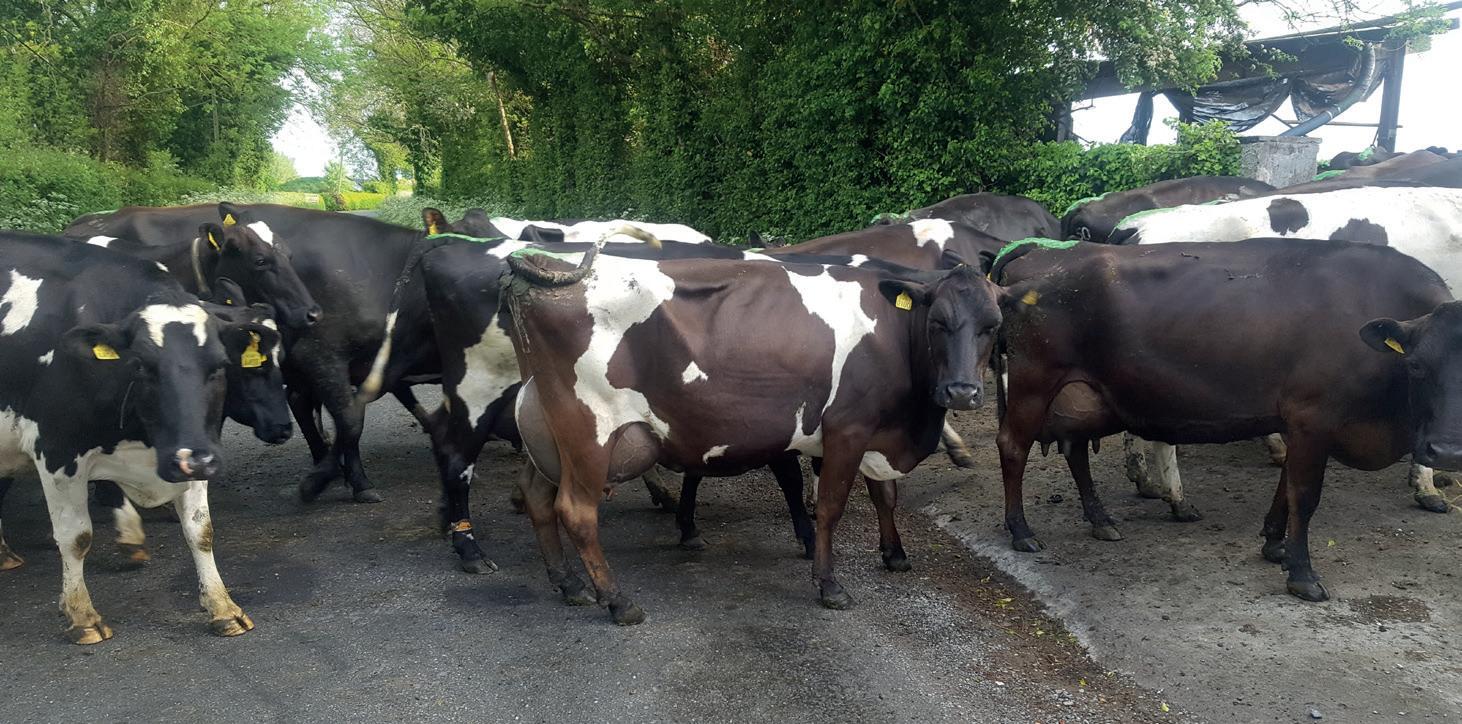
“It was a good time to buy as quotas were still in place and quite a few top breeders were over-stocked,” he says. “I
was able to start again with some very well-bred stock. At the moment some of the cows are older – last year 13 of 100 were in their 9th lactation - but now I’m getting plenty of heifer replacements through with my use of sexed semen. So I can afford to cull the older ones, those that are low performers or have SCC issues, and bring the average age down.”
With a total farm area of 67ha, the grazing platform is 32ha with the remaining grassland used for silage and youngstock. The farm can often get off to a wet and cold start at the turn close to 250-260 days a year.
6 | LIC GRASSROOTS
“Magic day can be between April 16 – 18 here, so we often have to feed concentrates and silage on the shoulders of the season. Not something I want to do, but we have to keep production up at peak times. Concentrate use last year was around 900 to 950kgs/head.” He says grass growth over the past three years has not been good, with yields around 12 to 13 tonnes/ha, partly due to the cold starts to the years, and partly due to last year’s drought.
Investment in technology has come alongside the increased use of sexed semen, with each cow now wearing a collar that will indicate when she’s ready to inseminate. “Timing of insemination is key and needs to be between 18 and 22 hours after the onset of heat. Previously we used tailpaint but this time the collars were great and we had excellent technicians, Gerry McCann and David Reilly from Eurogene doing the work.”
He admits he had somewhat mixed results, but has not been put off at all, hence the increase in sexed semen use this year..
“We’re trying to breed from our very best cows. The ones we select have to have calved in early February with no problems or retained cleansings. Body condition at service must be between 2.75 and 3, and she must have a history of getting in calf early.
“It’s the top 40-50% of our herd that we want to breed our replacements from, and this is based on production and fertility.
“We used a CIDR programme for 30 of the cows to breed all replacements with AI in the first 14-16 days of breeding, bringing week 3 into week 1 of breeding. This also helps to fix the time of serving 18-19 hours post GnRH being administered, it’s intense when calving starts, but saves on labour in the long term as all calves are similar in age.”
The results here were 59% returning a conception rate to first service. There were 31 cows with collars, and these returned 60% to first service.

“The heifers were on a PRID eight-day program with two shots of PG and Receptal at serving. This programme helped with managing labour as these animals were not going into the yard or through the parlour twice a day. We got 46% to first service with this group. “We weren’t happy with this result at all, expecting higher, but we’re investigating and we’ll change things for next year.”
He says he’s looking for ways to improve these figures, and that selecting the
right cows is key. “I think we could probably use 90 straws and get the number of heifers we want with a few extra,” he says. “But I’m willing to have a slightly lower number holding to first service to reduce the number of bull calves.”

He accepts he’s losing some days in milk with a lower conception rate but that choosing bulls and the best cows able to deliver more on solids is helping to compensate.
He weighed all cows in July 2021 and found the average of the whole herd was 489 kgs with the mature cows averaging 520kgs. He’d like the herd average to increase by about 20 kgs, so is concentrating on more Friesian than Jersey genetics for the next season or two, as he feels he’s put in improvements to boost solids. With a delivery of 526kgs MS, he’s showing the efficiency of the breed recording over 1.1kgs MS/liveweight)
Solids averaged 513 kgs/head in 2022 with 3.89% protein and 5.06% fat. His target is to get to 4% protein while keeping the fat percentage the same. His average lactation length is 3.7 which he would also like to increase to 4.
“In 2022 we used Premonition (JEX143), Hoss (JE4989), Dexter (JE5061), Floyd (JE5992), Homebrew (JEX191), Trapeze (FR7974) and Moorehill Max (FR6892) one of the bulls on the IBB programme. A lot were picked for udders, capacity, fertility and milk solids. We have to be careful as we have quite a bit of Sierra and PSQ behind these bulls, plus Mint Edition, so we need an outcross.
“For 2023 we’re using Banff (JE8085) and Lamar (JE7998), Homebrew (JEX191), Hardcopy (JEX152) Premonition (JEX143), Trapeze (FR7974, Olympic and Deans Professional (JEX140).”
He doesn’t choose bulls on EBI, but instead relies on BW, saying there is more daughter information available. The herd’s EBI has remained in the top 20% even though he is using lower EBI ranking bulls averaging between 160250 EBI.
“I’m totally committed to LIC genetics,” he says. “The results speak for themselves, and they’re producing the right milking cows for my farm situation. I’m looking forward to seeing the new heifers coming through and believe there’s a great future ahead for dairy in Ireland.”
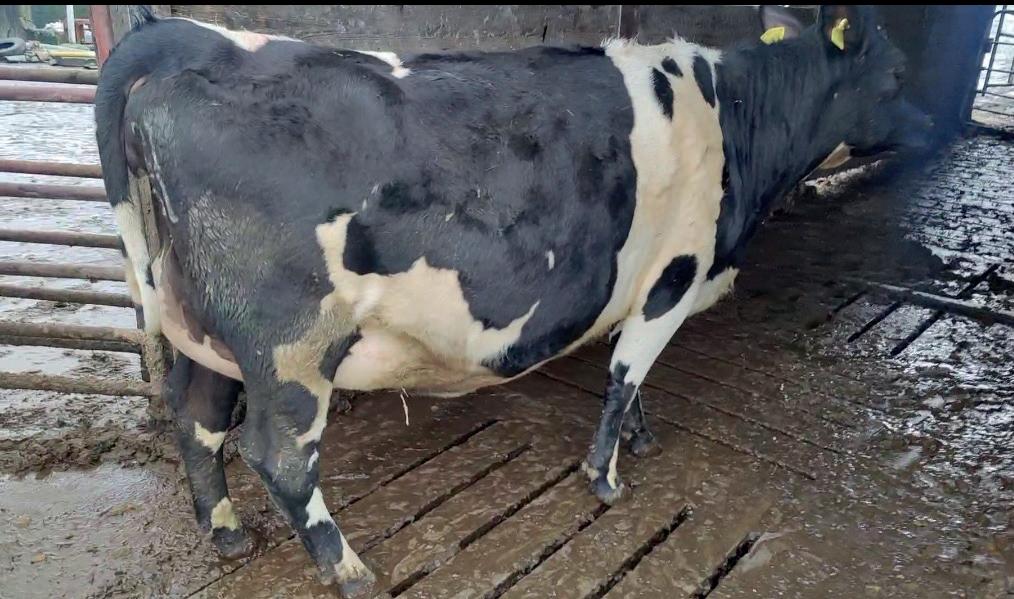
ISSUE 11 WINTER 2023 | 7
A day in the life of Eoin Kennedy THE BEST FOR THE BEST
Eoin only joined the LIC Ireland team last autumn, and is already loving every minute of his job, saying the quality of the bulls on offer puts him in the ‘best’ position to help grassland farmers improve the productivity and efficiency of their herds.

At the moment he’s really busy getting round to as many farmers in his area as possible, understanding their system and seeing how they operate on the ground. He says every customer is different but, as a great advocate of NZ genetics, he’s more than happy to promote something he believes in so strongly.
“I don’t think I could promote something that my heart wasn’t in, I’m just not that sort of person,” he says. “But I’m passionate about what NZ genetics offers, and it is something I would be doing anyway even if it wasn’t my job… just talking about the bulls and cows to everyone I’ve met.”
He’s very positive about the future of dairy in Ireland and says it’s clear there’re a lot of challenges and changes on the horizon. But he sees
lots of opportunities for young farmers, and that sometimes ‘change is a good thing’.
“Some producers here are very worried about the environmental changes coming our way, but the cross bred cow will suit any system going forwards. We have a durable agricultural business that can withstand any change, we just need to stay ahead of the curve.”
Eoin farms himself, in partnership with his mother and father, Mary and Roger. Today he milks 160 cows at Callan in Co.Kilkenny, some 45 minutes from the office in Cahir. The farm was run by his parents for more than 40 years and used to rear beef as well as milk cows.

“I came back to the farm straight from University where I had been studying a dairy business degree for four years,” he explains. “We had two blocks of land a kilometre apart from one another. One was 18ha that grazed 50 cows, and the 42ha is where we used to rear beef, and cut silage.
“After a lot of discussion, we decided to build a new parlour on the 42ha – a greenfield site – and to look at a substantial increase in cow numbers. This ground was drier and better for grazing so while we had 90 cows in 2018 we’d increased to 130 by 2022 and now we have 165 milkers.
“It’s been a quick expansion, and it’s gone well, we’re further along than I thought
we would be. My parents used to have a British Friesian type of cow but having spent time in New Zealand I could see the benefit of a cross bred cow, and while it took me a while to realise their value, I started to visit farms around the country and exploring what opportunities these cows would give me.
“In 2021 we sold all our heifer calves and bought-in 50 LIC heifers from a herd in Waterford that are due to calve down this year. In 2022 I did the same, and bought in another 40-plus heifers from the same herd.
“I’m certain they’re now the right cows to build a business from and that this stock will perform well for my farm.”
The farm is 100% spring calving unit starting on February 5, and from that date Eoin tries to get the cows, once calved, out as soon as possible “Sometimes it’s difficult as most of our land can be heavy.” However, he points out that last year, a year of drought, he still managed to grow between 13.5 and 14 tonnes/grass/ha and was the envy of his neighbours.
He describes the farm as being ‘flipped on its head’ with all the dairy cows now on the 42ha parcel which has a three-year-old 24-unit herringbone
8 | LIC GRASSROOTS
and cubicle building, with another 84 topless cubicles added in 2020. By November 2022 the farm had a total of 170 cubicles.
“Everything built here does allow for further expansion, when that’s the right decision,” he says. “I always keep in my mind that I may expand, and I want to be able to take any opportunity that may come along. But it needs to be the right one.”
In terms of labour he has one full time worker Alex, himself and a relief milker Ger, with his father still looking after the youngstock and his mother helping with the admin and accounts.
His love affair with New Zealand began when he was lucky enough to spend a year there during his degree course.
“As a teenager I was always interested in dairying. I have a twin brother and four older sisters, but I was always the one more interested in the farm. I was lucky to have the opportunity to go –along with all my class – to NZ and I had wanted to see the grass-based systems there and the wonderful scenery.

“We all had a great craic, 22 of us travelling together, and I ended up on a 1200 cow farm in Canterbury, and loved every minute of it. I got a lot of responsibility from my boss, partly I think because we were short staffed. I learnt how to work as part of a team. On our days off we’d all get together and spend the day on the road.
“My trip to NZ made me realise the potential the farm here had. I approached my parents with my plans, got the green light, and started on the greenfield site. Everything was put in from scratch, the roadways, fencing, water – the whole infrastructure.”
So, when Eoin has spare time, what else does he enjoy?
“Since the age of 17 I have become very involved in Macra Na Feirme which gets involved in all kinds of sports and social events through the club structure across the country.


“My beloved club Callan Macra has been my escape from the farm and it’s helped me to develop a different skill set – public speaking, debating, holding different leadership roles and so on.”
He feels the farm is now in a good position ‘ticking over’ and when he got the job for LIC , his first job interview ever, he was delighted to be offered the job.
“I love it,” he says. “I’m really interested in grazing cows and genetics, and it’s quite special to be on farms where you can look at genetic data and see how LIC bulls can improve or are improving their dairy herds in terms of productivity and efficiency.”
Asked what bulls he thinks ‘really do the job’ he points to Sierra, who he has personally used a lot, and says that with 100,000 daughters on the ground in New Zealand he has really proved himself and is an all round bull. As a Jersey, he points to Riverview and Dexter, describing his offspring as ‘little tanks’.
“I’m busy travelling around and meeting as many LIC customers as I can, but if there is anyone else who would like me to drop by for a chat, please get in touch. Either email me on ekennedy@liceurope.com or call me on 086 4107786.”
ISSUE 11 WINTER 2023 | 9
Action-packed trip to NZ says Leonard Gavin
After a previous trip to New Zealand in 2015, I was very excited to return, I certainly wasn’t let down, and it was definitely worth the wait.
I couldn’t speak highly enough about the people we met and the hospitality they showed us during our trip. Welcoming us into their homes and making sure we had a great time. It was nice to befriend people we would usually only see on a Zoom meeting or via email.
Next, the people I travelled with from Ireland. There was never a dull moment, other than when our bags were left in Chicago for an extra week.
It was very much an action-packed trip. We visited 17 farms in 11 days with the LIC New Zealand team, before undertaking some personal travel where we fitted in five more. Included in this was a dairy sheep farm. We also had a tour of the European bull stud at Awahuri, an excellent insight of the work that’s put in to getting semen from New Zealand to Irish farmers.
A few special visits from the trip included our visit to Tamara and Drew Finlay, an owner operated farm, with extremely good attention to detail. The couple milk 220 crossbred cows with a focus on udders and capacity, which was clearly seen in their cows, and achieving 560kgs milk solids in their system.
Then there was a day spent with Brendan White, who had sold his previous herd to purchase the A2A2 cows from the dispersal of the Okura herd. Brendan is

milking 450 cows and knows each cow’s pedigree and history without using the MINDA® software app. He has a passion for his cows which is paying off, as LIC are purchasing bulls from him and have bought another two this year.

We also took a trip to the South Island where we visited Steven and Nina Ireland in Temuka. Steven and Nina own the Lynbrook herd and just like Brendan, Steven knew the cows like the back of his hand. The Lynbrook herd has produced a number of excellent bulls, but the standout bull is Lynbrook Terrific. Terrific was inducted in to the LIC hall of Fame along with his son Okura Integrity. Jersey breeders hail Terrific as one of the best Jerseys ever bred and Steven as one of the best breeders.
Our tour of LIC Headquarters in Hamilton was something I was really looking forward to. The sheer size of the company and the amount of people involved within the business was something I had not foreseen. We were lucky enough to see some of the bulls we would be selling here in Ireland. We saw Werders Premonition and Innovation Homebrew in work mode at the stud, along with the likes of Tironui Superman and Ulmarra Gallivant in the paddock. The bull handlers are people I take my hat off to.
Since my previous visit in 2015 I noticed some big changes within the industry. New
Zealand dairy farmers are facing similar problems to Irish farmers. Environmental regulation is coming in hard.

The biggest changes and challenges they’re facing include being limited to 190kg of chemical nitrogen per hectare. It’s being strictly policed, and is definitely inhibiting farmers on irrigated land from growing as much grass as they once could.
Closed periods for spreading effluent and being forced to have extra storage for soiled water is also a huge change since 2015. Finding accommodation for wintering is becoming a bigger challenge in Canterbury as sloped land over 30 degrees is no longer allowed to be used for grazing fodder crops such as kale or beet for the winter.
The country also faces big problems in terms of surplus calves. Similar to Ireland, pressure is coming on the slaughtering of young calves, and live exports to China are set to end this year. There’s definite uncertainty as to how to solve this issue.
On the other hand, there’s definitely more technology now being used in herds. Most farms are looking at putting in health and heat detection systems such as Nedap or Allflex like here in Ireland. One of the fastest growing products in New Zealand is called Halter. Halter is a virtual fencing collar which reduces labour on farms. It’s used for break fencing and for getting cows in for milking. We saw this on a couple of farms, and it’s something that will catch on even more over there if the labour situation doesn’t improve.
All in all, it was a brilliant trip. New Zealand is the land of opportunity in my eyes and is surely worth a visit for people of any age. Whether for a dairy farming trip or just a holiday.
A special mention to LIC International staff Joyce Voogt, Trina Dunning and Barry Allison for making our trip one to remember. Also to Eurogene who, without them, we wouldn’t have been able to get there.
10 | LIC GRASSROOTS
Open minded and friendly New Zealand producers
Over the years Jeremiah Daly has read numerous articles on New Zealand agriculture and their progressive farming grass-based systems, but, he says, nothing compares to travelling over there and experiencing it in person...now he’s done exactly that. Here’s his report.
One of our key visits was to Massey University where we met Dr Nicolas LopezVillalobos, Professor of Dairy Cattle Breeding and Genetics. He explained the many different trials they were running and the factors that have the biggest influence, specifically the Variable Milking Selection Index and the different breeding strategies that work well in that system. The herd at Massey is in the top 5% of BW nationally. We also met with Nick Sneddon, Senior Lecturer in the Animal Science Group, School of Agriculture and Environment. We were shown the different trials currently being run on alternative clover swards and multi herbage leys.
As a once-a-day farmer for many years, this was a very special opportunity for me, and I felt grateful for all the years of research that has propelled our transition in the milking system with ease. I feel this is still an underdeveloped and underutilised option to sustain our dairy farms in an ever changing environment.
We visited both LIC bull studs at Newstead and Awahuri.
Newstead
This is LIC’s home stud based in Hamilton, the base for all premier bulls and rapidly expanding genomic proving young sires. It was impressive to see all the animals out in an unenclosed environment, 365 days.
We were given a presentation on herd improvement, genetic gain, the sire proving scheme, environmental footprint, and methane trials. We also met with Richard Spelman, Chief Scientist, to discuss future
trends in breeding choices that will have a large environmental impact.
Awahuri
This is the European accredited stud in Palmerston North where all semen is collected from quarantined bulls on site, processed, packed and sealed before it leaves for its trip to many thankful European farmers. Susan Paul is the person responsible for this extremely well-run facility and her knowledge on all aspects was truly mind blowing.
Sheep milking
We visited a newly built sheep milking facility in Tahuna, Waikato belonging to Malcolm and Claire Edwards. We got a very good insight into the possibilities for sheep milk in the yoghurt and cheese markets. It has a very positive environmental impact on farming, soil type and gradients that aren’t suited to dairy farming.

Environmental farms
We met Jo Sheridan, head of Owl Farm. We were taken through the farm to see the many ecological studies going on with the students. The farm consists of 160ha, and carries 350 cows averaging 450kgs milksolids. It’s a system 2 herd on approximately 300kgs of imported feed.
Calving starts on July 1 and finishes on September 2. The previous winter growth averaged 24kgs of dry matter per hectare, they have 30% clover in swards and are using 120 units of nitrogen per/ha. Herd BW is 25th and production worth is 299 (top 5% in New Zealand). They’re also looking at the value of using polled genetics to reduce animal stress. There was an interesting study on heat stress on cows, and its effect on animal production. Sexed semen was also being trialled.

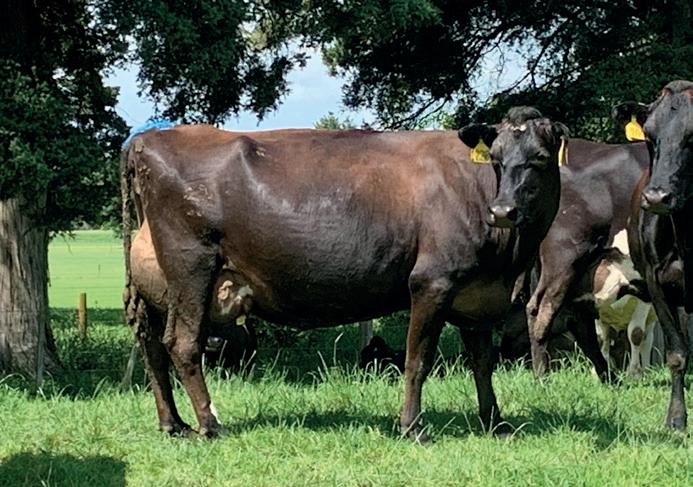
Cows were, on average, 465kg giving a 90%+ efficiency. All cows are body condition scored three times per year. The ever-increasing use of heat and health
detection aids was also being trialled, with very favourable results showing in conception to sexed semen specifically. The farm receives 800mm of rain annually and has built in wetlands proving its ability to remove 65% of nitrates before they can enter waterways. Early, mid and latematuring varieties of kale are grown to feed the herd over the winter period.
We visited many herds of very well bred cows, both in the North and South Islands; Lynbrook, Tanglewood, Arkans, Okura and Kokoamo to name but a few. I was impressed to see so many excellent cow families that I see as a conveyer belt for excellent genetics coming through in the future.
We also visited Shrimpton’s Hill Herefords. Speaking with John and Hamish on future trends in the short gestation, meat marbling and polled beef sire areas was very informative
Two particular things of note for me, the openminded and friendly nature of all the people we met will stay with me forever. In our short time there, we met friends that we’re already corresponding with on a weekly basis.
And also the concept that I was most impressed with - the contract milking scheme, that works so efficiently that I am looking to put it into practice on an Irish farm.
ISSUE 11 WINTER 2023 | 11
CONTACTS
LIC Ireland Ltd
Carrigeen Commercial Park
Cahir, Co Tipperary, Ireland
T 052 744 2517
Eurogene AI Services (IRL) L td
Carrigeen Commercial Park
Cahir, Co Tipperary, Ireland
T 052 744 2517
MARK RYDER

General Manager - LIC Europe
T +44 78 2731 7331
E mryder@liceurope.com
d AI Services (NI)
T 028 9083 3123
F 028 9084 2640
Lt
E info@ai-services.co.uk
EOIN KENNEDY
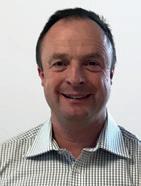


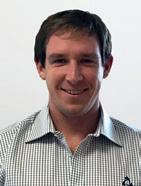
LIC Breeding Advisor - Midlands South East
T 086 410 7786
E ekennedy@liceurope.com
DAVID POWER
LIC Genetics Dev Mgr - Midlands South East
T 087 937 2553
E dpower@liceurope.com
LEONARD GAVIN
LIC Breeding Advisor - Midlands North East & West
T 086 142 8830
E lgavin@eurogeneaiservices.com
AIDEN CUNNINGHAM
LIC Breeding Advisor - Cork & South Tipperary
T 086 174 5666
E aiden@eurogeneaiservices.com
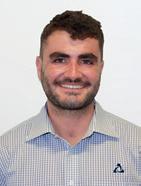
JEREMIAH DALY
LIC Breeding Advisor - Kerry & Limerick
T 087 399 5967
E jdaly@eurogeneaiservices.com
MAIREAD HAYES
Telesales
T 052 744 2517
E mairead@eurogeneaiservices.com
ANGELA KENNEDY
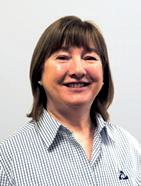
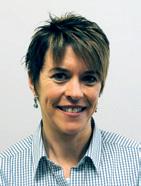
Telesales
T 052 744 2517
E angelak@eurogeneaiservices.com
For the latest information and bull teams visit our website: www.lic.ie













































